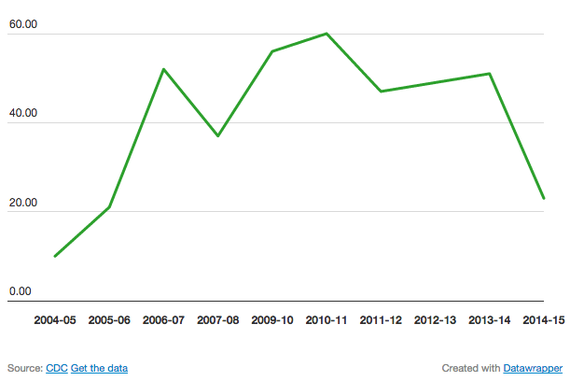The Financial Consequences of a Bad Flu Shot
While CDC doesn't have an official estimate for the economic costs of ineffective seasonal vaccines, various studies have suggested that resistant viral strains can weigh on the economy.
The polar vortex has abated (at least for the time being ), but flu season is far from over. By now, mid-January, many of my colleagues have fallen ill and been confined at home with chicken soup and Netflix. This has been a bad year for the flu , in part because this year's vaccine hasn't been as effective as hoped.
What's the economic toll of all those hours workers are spending in bed? It's tough to calculate , but two often quoted numbers point to significant losses: One 2007 study estimated that the flu costs approximately $7 billion in lost productivity, with 111 million workdays lost .
With losses of that size, slight variations in the vaccine's effectiveness can dramatically impact just how bad the flu's impact on the economy is, and whether that vaccine is even worth it, economically speaking. One cost-benefit analysis concluded that vaccination is cost saving when the vaccine efficacy is high, but when a flu vaccine is a poor match to the prevailing flu viruses of the season, it is not cost saving due to work absenteeism . This study defined a "poor match" as a vaccine that reduces flu risk by 35 percent; this year's vaccine is estimated to reduce risk by even less— 23 percent . ( Another study found that vaccination shows no appreciable effect on working days lost.)
Adjusted Vaccine Effectiveness Estimates

It's fairly certain that tallying up lost earnings from death and lost productivity is in the billions . According to the CDC, flu season peaks in the U.S. between December and February, so there's about seven more weeks to survive—or become a statistic.
( Image via Image Point Fr / Shutterstock.com )
NEXT STORY: Leaders, Don't Let Knowledge Walk Out the Door



